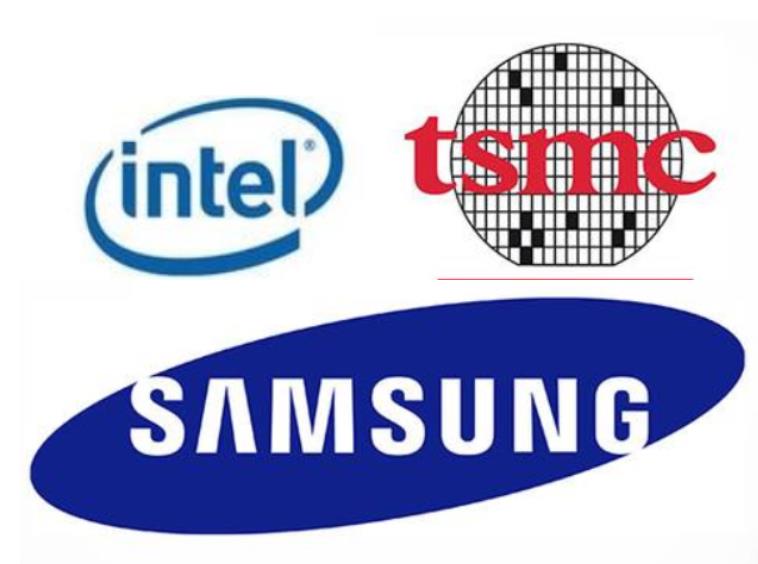Currently, there are only three wafers that can enter the 10nm process, namely Intel, TSMC, and Samsung.
At present, TSMC and Samsung are already in the 3nm stage, while Intel is still in the 7nm stage. However, according to the plan, by 2025, these three major wafer factories will all enter the 2nm stage.
Of course, none of these matters, what matters is the 2nm process or the inflection point battle among Samsung, Intel, and TSMC.
2nm, the turning point battle of the three major wafer giants, unfortunately SMIC and Huahong are not qualified to participate in the battle
Samsung, as the millennial leader in the field of OEM, has been under the influence of TSMC for many years and has always wanted to seek revenge and become the boss. For this reason, Samsung has been working hard at 7nm, 5nm, 4nm, and 3nm, aiming to lead TSMC.
At 3nm, it was the first to use GAAFET transistor technology and mass produce 3nm. I wanted to use TSMC as a head, but unfortunately my strength was still a bit weak, so I couldn’t counter it at 3nm. However, at 2nm, if Samsung’s technology is good and the yield is high, there is still a great opportunity.
2nm, the turning point battle of the three major wafer giants, unfortunately SMIC and Huahong are not qualified to participate in the battle
As for Intel, after being influenced by Samsung and TSMC for many years in terms of craftsmanship, it also decided to develop foundry industry and launched an “IDM 2.0” strategy, in which Intel opened up its own foundry services to the outside world and expanded the use of third-party foundry capacity.
Since we are going to outsource production, craftsmanship is the most important productivity. Therefore, Intel plans to catch up with TSMC and Samsung as soon as possible and achieve 2nm or even 1.8nm by 2025, competing with TSMC and Samsung to compete in the market.
2nm, the turning point battle of the three major wafer giants, unfortunately SMIC and Huahong are not qualified to participate in the battle
As for TSMC, having been the leader for so many years, they are even less willing to be counterattacked by other manufacturers. Therefore, at 2nm, TSMC also plans to use GAAFET transistor technology to replace the outdated FinFET transistor technology.
At the same time, in order to attract American manufacturers, we are even willing to partially relocate both 5nm and 3nm processes to the United States, in order to consolidate our position and avoid being taken over by other manufacturers in the market.
But it is obvious that these three major manufacturers are currently competing at 2nm. Whoever can stand out at 2nm is highly likely to take the lead and compete for a place at 2nm. Therefore, 2nm is highly likely to be the turning point battle for these three major manufacturers. If Samsung and Intel perform outstandingly, TSMC’s performance will be superior.
2nm, the turning point battle of the three major wafer giants, unfortunately SMIC and Huahong are not qualified to participate in the battle
Of course, the most regrettable thing is that these three giants compete on 2nm, and our SMIC and Huahong are not qualified to participate in the battle. SMIC is still at 14nm, and due to the current ban, we don’t even know if we enter 10nm, let alone 2nm,
And Huahong’s publicly available technology is still at 55nm+, not even 40nm, which is a thousand miles away from entering 10nm. Even less so at 2nm, they can only move a stool to watch the play.
I don’t know when mainland wafer factories can compare their craftsmanship with these three giants, so it’s really perfecthttps://www.stoneitech.com/
